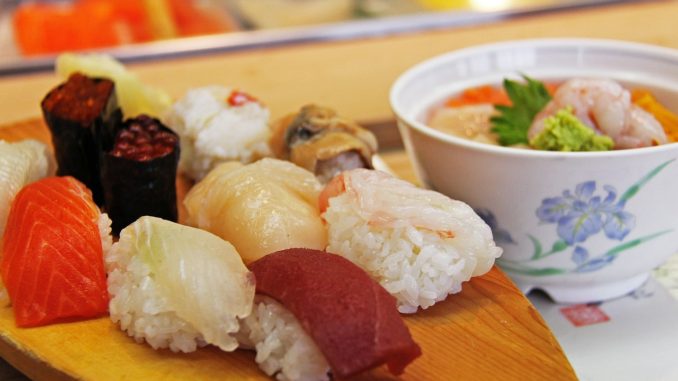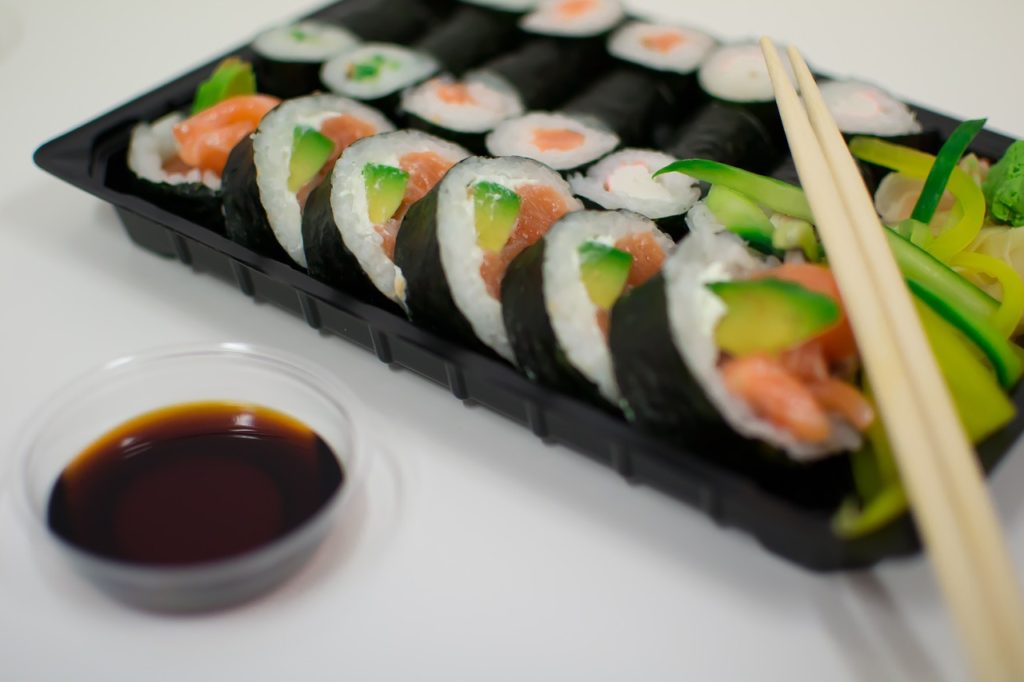Did you know that the Japanese eat 1/6 of all fish and seafood caught in the world
There are over 10,000 species of fish and seafood in Japanese cuisine.
Japan is an island nation, washed by the warm waters of the Sea of Japan, Kuroshio. Its space is inhabited by a variety of fish, crustaceans y and mollusks. It is therefore not surprising that the second most important component of Japanese food is fish and seafood.
Sushi came to Japan about 100 years ago as a method of preserving fish. Today, you will rarely find a Japanese Restaurant that doesn’t serve some form of sushi. The homeland of original sushi is South Asia. Cleaned and cut, the fish is packed in layers, salted and stone pressed. A few weeks later the stones are replaced by a wooden cover. After several months of marinating, it is ready to be consumed. Several restaurants in Tokyo still offer this original sushi called “Narezushi”, made from freshwater carp. This dish is so strong and pungent; it makes it hard to identify which fish it is prepared from, but Narezushi is surprisingly good tasting.
In 1900, a talented chef named Yohei decided to avoid the traditional way of preparing fish and began serving raw fish on rice. This is how sushi, as we know it, was born. This innovation quickly became very popular and soon there were two different styles of preparation. “Kansai”, a style from the city of Osaka and “Edo” from Tokyo. Local rice merchants of Japan’s commercial capital, Osaka, realized the importance and uniqueness of sushi, which was made up of specially prepared rice and thinly cut fish filets. In Tokyo, located on the shore of a bay rich in fish and shellfish, “Nigirizushi” was offered, made up of thinly cut fish on a small lump of seasoned rice. Even though the estheticallv more beautiful Kansai – style sushi is very popular, foreigners prefer Nigirizushi.
The Japanese eat 1/6 of all fish and seafood caught in the world. There are over 10,000 species of fish and seafood in Japanese cuisine. Prepared on a grill, steamed or just plain raw, it is easily digested and retaining most of its nutrients and flavors. A popular method of disinfecting fish is by soaking it in vinegar.

Probably the most popular dish in Japan is “Sashimi” – raw fish sliced into small pieces, served with noodles, fresh vegetables and soy sauce. In order to get the full flavor, fish is dipped in the mixture of soy sauce and Japanese horseradish – “wasabi”.
Fish and seafood are not only consumed raw, but also live. Such dishes are called “Odori”. In this way live squid or a dish called „the dancing grouper” is prepared. The cooking process involves scalding fish while still alive, cutting it into small pieces and pouring sauce over it.
However, the most delicious dish in Japanese cuisine is “Fugusashi”. Fugusashi is a beautiful dish, quite unique in flavor. It is made from “fugu” family of fish. Filets of fugu fish, fried or raw, are placed on a round platter along with “Ponzi” (vinegar sauce) and “Daikon” (Japanese radish). 1.5 thousand tons of fugu fish is consumed in Japan annually. Interestingly, muscles, liver and fish eggs contain large amounts of nerve poison, 25 times stronger than the infamous African poison “curare” and 275 times more toxic than cyanide – tetrodotoxin.
Human lethal dose of tetrodotoxin is just 1 mg. Poison of a single fish is enough to kill 40 people. Moreover, an effective antidote still does not exist.

